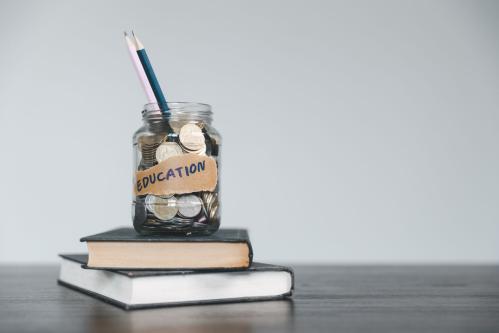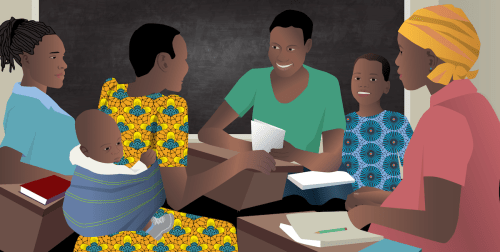In my last blog, I referenced the Incheon World Education Forum commitment to “equitable quality” that:
“…fosters creativity and knowledge, and ensures the acquisition of the foundational skills of literacy and numeracy as well as analytical, problem-solving and other high-level cognitive, interpersonal and social skills [and]… also develops the skills, values and attitudes that enable citizens to lead healthy and fulfilled lives, make informed decisions, and respond to local and global challenges through education for sustainable development and global citizenship education.”
I also commented that while these goals have existed in a variety of forms around the world as policy and guidance for many years, very few education systems have moved to implement them as tangible learning outcomes or coherent pedagogic strategies. In grouping these outcomes, competencies, and attributes within the notion of “relevance,” I concluded that the Incheon Declaration and the imminent commitment to the Sustainable Development Goals (SDGs) make it clear that the time to concretize relevance in quality education is now, and that to do so will require coherent, coordinated, systemic responses.
Arguably most vital in committing strategically and effectively to relevance in education is what one might refer to as the “bookends” of the education equation. These are the curriculum and student assessment. The curriculum is, most fundamentally, the vision of what society requires and desires its graduates to know, to do, to be, and how to live together, as outlined in the landmark Delors Commission Report to UNESCO. Assessment is how an education system and society together confirm that all the inputs and the overall education process have succeeded in endowing its students and graduates with the learning aims identified in the curriculum.
Beginning with the curriculum, many systems fall into a trap with relevance. This is the perception of relevance as being about content; so they expand the curriculum by adding information drawn from “daily life” and the local context for students to learn as information, suitable for testing. Compounding the gross inadequacy of this strategy is when an education system introduces relevance mainly by compiling information from the many settings that span its diverse geographies, cultures, economic activities, social institutions, and so on. Looking to Morocco as an example, the herders of the High Atlas, the nomads of the Sahara, the various urban elite or slum dwellers and the fishing communities of the coasts may share a national curriculum, but they share relatively little of local relevance, whether as contextual knowledge or as ways to put their academic lessons into useful practice for life and livelihood. So, step one in incorporating relevance into a curriculum is not to add content from across a system’s context but rather to create open spaces within the curriculum for teachers at a school and across a micro-region to fill with knowledge, skills, and applications that they identify from their surroundings and with which local experts might help them.
This same space provides teachers and students (along with other local partners) the opportunity to cultivate students’ personal competencies. The development of learning strategies, creativity, the techniques and behaviors of teamwork, critical thinking, and so on does not happen by rote or as highly circumscribed tasks. Two examples come from Eastern Tajikistan, where I have been advising the Aga Khan Foundation to introduce a Relevance Pedagogy model. In one second grade class, a highly accomplished, dynamic, experienced teacher took his second grade class on an outing to observe and learn about trees and rocks in nature and to understand erosion and how to prevent it. This was a vast improvement over the custom of only teaching these notions as abstractions from a text, as was evident in the enthusiasm of the students, their deep and creative questions and their quick and thoughtful answers to questions from the teacher. Yet, the teacher still did most of the talking, identifying the functions of trees and rocks in the natural and built environment along the 10-minute walk to the destination and pointing out and explaining the ravages of erosion and where the bank was still intact once the class reached the river bank. The local content was abundant. What he missed, though, was the opportunity for students to explore and discover these many dimensions on their own, perhaps working as teams and even competing to write down all the functions they could spot along the walk and to hypothesize and even do experiments about erosion and its prevention. Besides the even more profound learning of the concepts that would have occurred, they could have been honing their observation, teamwork, creativity, confidence, perseverance, critical thinking, and many other personal competencies.
A similar opportunity was lost in the 11th grade trigonometry lesson I observed. There, the teacher accompanied his students in the village to assess their comprehension of the related concepts by asking them to apply these to a practical task. Specifically, he instructed them to measure the height of a building by first measuring the shadow, capturing the angle from the end of the shadow to the top of the building and performing the appropriate trigonometric calculation. This was a practical application, for sure. Yet, contrast this with the depth and breadth of learning that might have occurred had the teacher simply given the instruction: “We’ve just completed the lesson on trigonometry. In groups of three, go find some structure or natural object that is taller than our school and measure its height, without measuring it directly. Show your work so that you can explain your method to the class.”
Certainly none of this is easy, particularly the notion of assessing personal competencies. It is one thing to measure students’ understanding and facility with academic knowledge and techniques by placing them before a practical application, as did our friend the mathematics teacher. It is quite another for a teacher to assess objectively and meaningfully the degree of creativity, perseverance, collaboration and confidence s/he brings to such a task. And the challenge of doing this using a standardized, independent assessment is even greater. Indeed, Hank Levin, at Teachers’ College, Columbia University, states bluntly that “There is simply no global agreement on what is of consequence beyond student achievement and how it should be measured.” However, difficulty cannot be a reason not to do something, nor should it be a reason to postpone action, even if the argument is that we need to get the “basics” covered first. Relevance is not in competition with reading and mathematics but rather reinforces these in valuable and even important ways.
So, while looking to curriculum to lead a country to Education for All (EFA) and the SDGs, an education system will wish to revise its assessment priorities and strategies to measure also knowledge and skills “in use”—that is, that are relevant so that students can apply them to their lives—as well as core personal competencies. Among the many shifts in approach that this move will require is an elevation of the importance of classroom-based assessment, as many aspects of application and of personal competencies defy standardized measures, whether because of cost or, even, technical constraints.
Finally, the fulcrum upon which the design and delivery of a relevant curriculum and its eventual assessment rest is the teacher. Struggling to deliver the most basic of skills in many schools around the globe, teachers might seem still to be light-years away from introducing relevance on their own into their instruction. My experience leads me to dismiss such an automatic conclusion, though, having also piloted relevance methods successfully in rural schools of southern Ethiopia.
With no expectation to change the current situation overnight, systems must still approach teacher training, monitoring and support in ways that begin to equip and embolden teachers to teach from and for relevance. This might fruitfully include as well moving from the teacher-as-lone-wolf model of instruction and cascade training strategies to a community of practice approach, used equally for teacher professional development and for the design, delivery, and assessment of relevant (and all) instruction. The textbooks, teachers’ guides, and other instructional materials and equipment which systems provide can also prepare and support teachers greatly in incorporating relevance effectively into their instruction. So too provision of resources for other matters such as extra-curricular activities, community mobilization, school management and reporting, and school facilities, among others.
With the Incheon Declaration and the SDGs, it would seem that the moment to translate the idea of relevance into actual practice has finally come. As indicated, imbuing teaching and learning with content and competencies that spill over into “real” life will not be easy; and there will be many who argue that relevance, despite its clear value, is a luxury that systems cannot afford until all children are reading and calculating at grade level. However, as hinted above, such an argument will be a smokescreen, for two reasons. One, relevance is a vital factor in helping children learn to read and calculate well, not a competing strategy; and two, reading and calculating are only really valuable when they can be used to serve various life functions. If the world has finally embraced the idea that education is not quality education without learning, it must also accept that there is no quality without relevance, and then it must act purposefully and strategically towards this goal, with policy and action at all levels of the system, and beyond.



Commentary
Quality and the SDGs: What will this really mean for education? (Part II)
July 17, 2015